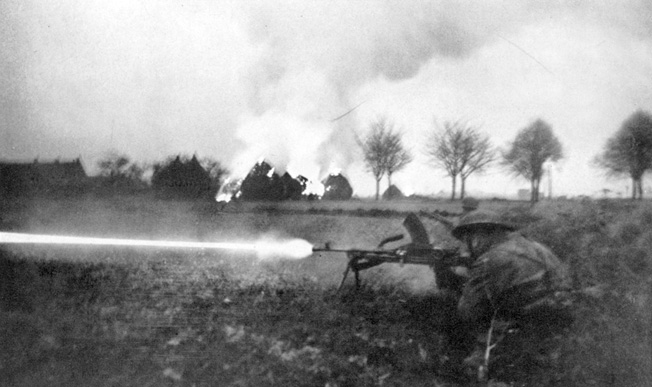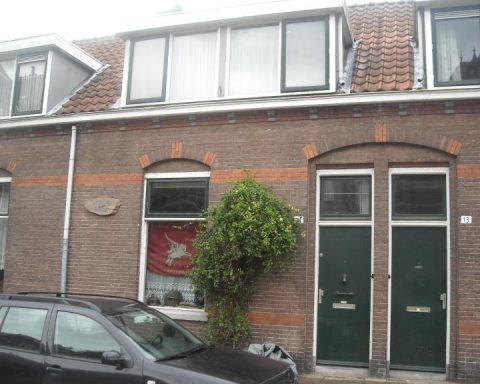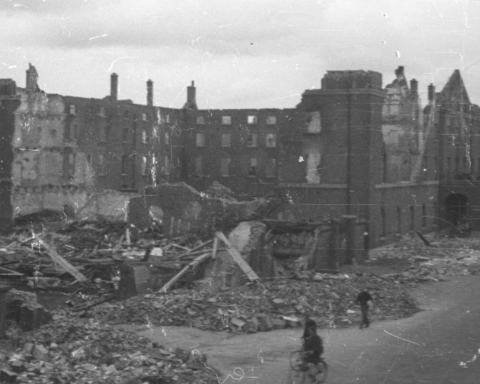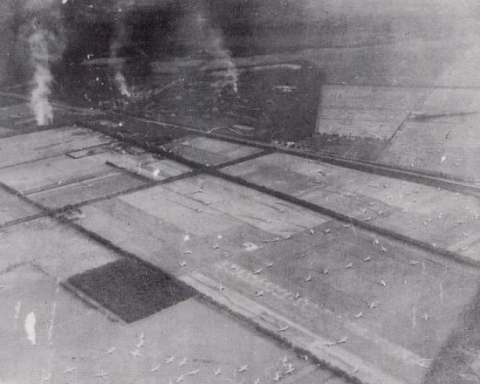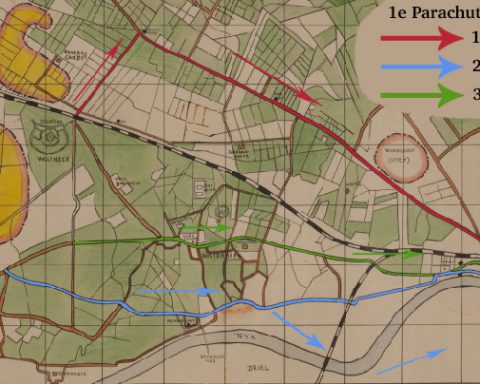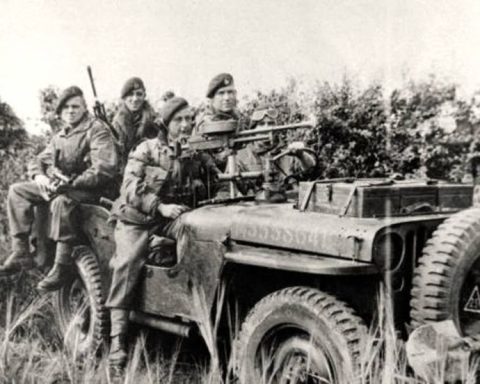While the situation of the remnants of the British Airborne Division in Oosterbeek became increasingly precarious on Saturday, September 23, the German army leadership was not yet convinced of a positive outcome.
The Germans knew that the British in Oosterbeek only had a quarter of the combat strength they had at the landing on September 17 and that the British had great difficulty holding their ground in the bridgehead on the north side of the Rhine near Oosterbeek.
The Germans had managed to recapture the Rhine Bridge from the British airborne troops, but the bridge near Nijmegen had been lost. In the area between Arnhem and Nijmegen, the Germans had set up a strong defensive line that ran from the railway embankment at Arnhem to Elst, and from there further in the direction of Bemmel.
However, more than 900 Polish paratroopers and the leading shock troops of XXX Corps were on the south side of the Rhine opposite the British perimeter. The Germans took into account that the Allies would make a major crossing over the river here, in order to further expand the bridgehead on the north side of the Rhine.
Despite a lack of food and ammunition, the British at Oosterbeek were reluctant to give up. After major German losses in attacks on the British perimeter, General Bittrich had opted for a war of attrition in which the Germans continuously bombarded the British positions with mortars and grenades .
But not everyone liked that approach. From his headquarters in East Prussia, Hitler had already angrily asked the Oberkommando der Wehrmacht why the British had not yet been destroyed at Oosterbeek. The German Oberkommando was also afraid that Montgomery wanted to break through Oosterbeek. Bittrich was then pressured to eliminate the British perimeter as quickly as possible.
Airborne landing at Overasselt
However , German Field Marshal Walter Model , who was responsible for the German defense, suspected that there was a greater chance that the Allies would adjust their route of march. Model suspected that the Allies wanted to enter the German Empire east of Nijmegen. Here they avoided the much-feared German West Wall.
Model thought that a new major airborne operation by the Allies was planned to revive the stalled offensive. Model was supported in this idea by airborne landings on that day in the middle of the American sector near Overasselt. The remainder of the Polish Parachute Brigade landed there.
On Thursday, September 21, the entire Polish Parachute Brigade was recalled shortly after take-off in England because the weather was too bad. That message did not get through to 41 aircraft . That is why only part of the Poles had landed at Driel.
The remainder of the Polish paratroopers landed near Overasselt together with other troops on Saturday, September 23. A total of 3,300 troops landed there. A small part of the Polish paratroopers were then transported by trucks to the Poles near Driel, but the majority of the airborne troops were transferred to Groesbeek to strengthen the position of the 82nd Airborne Division.
According to Model, these were all signs that the battle was far from over. However, the Germans’ fear of a revival of the Allied offensive was at odds with reality.
Muddling through
In Great Britain, radio stations were already cautiously suggesting that Market Garden might end in a deception and that the end goal would not be achieved.
The day before, there had been consultations at General Eisenhower’s headquarters between all Supreme Allied Commanders about how to proceed on the Western Front. While American generals Patton and Bradley were present at this meeting, Montgomery was represented by his chief of staff. The official excuse was that Montgomery was too busy with Market Garden’s output.
In reality, Montgomery barely interfered in the course of the battle during Operation Market Garden, leaving that to Generals Dempsey and Horrocks. Montgomery was probably already feeling the downpour because it did not look like the jump over the Rhine would be made via Market Garden.
During the consultation at Eisenhower’s headquarters, it was actually decided not to adjust the plans and to continue along the chosen path.
Evacuation
Model, however, was convinced that the Allies would not give up so quickly. In his view, Operation Market Garden was half successful. Now that the Allies had already come this far, they would surely come up with something to make the operation a success.
Model feared that Arnhem, even if the Allies turned right at Nijmegen, would continue to play a leading role in the remainder of the fighting. For that reason, he decided on Saturday, September 23, that Arnhem had to be evacuated. In his view, the city was too dangerous for civilians to stay.
After the war, it was often thought that Arnhem was evacuated so that the Germans could plunder the city undisturbed, but that is incorrect. The idea to plunder Arnhem only arose later. On September 23, it was a purely military decision to decide on a mandatory evacuation.
According to the Germans, “sei mit Bombenteppiche zu rechnen” . Moreover, during the fighting in the previous week, the Germans had concluded that the Arnhemians were at best getting in the way of the fighting and at worst doing everything they could to help the Allied soldiers.

